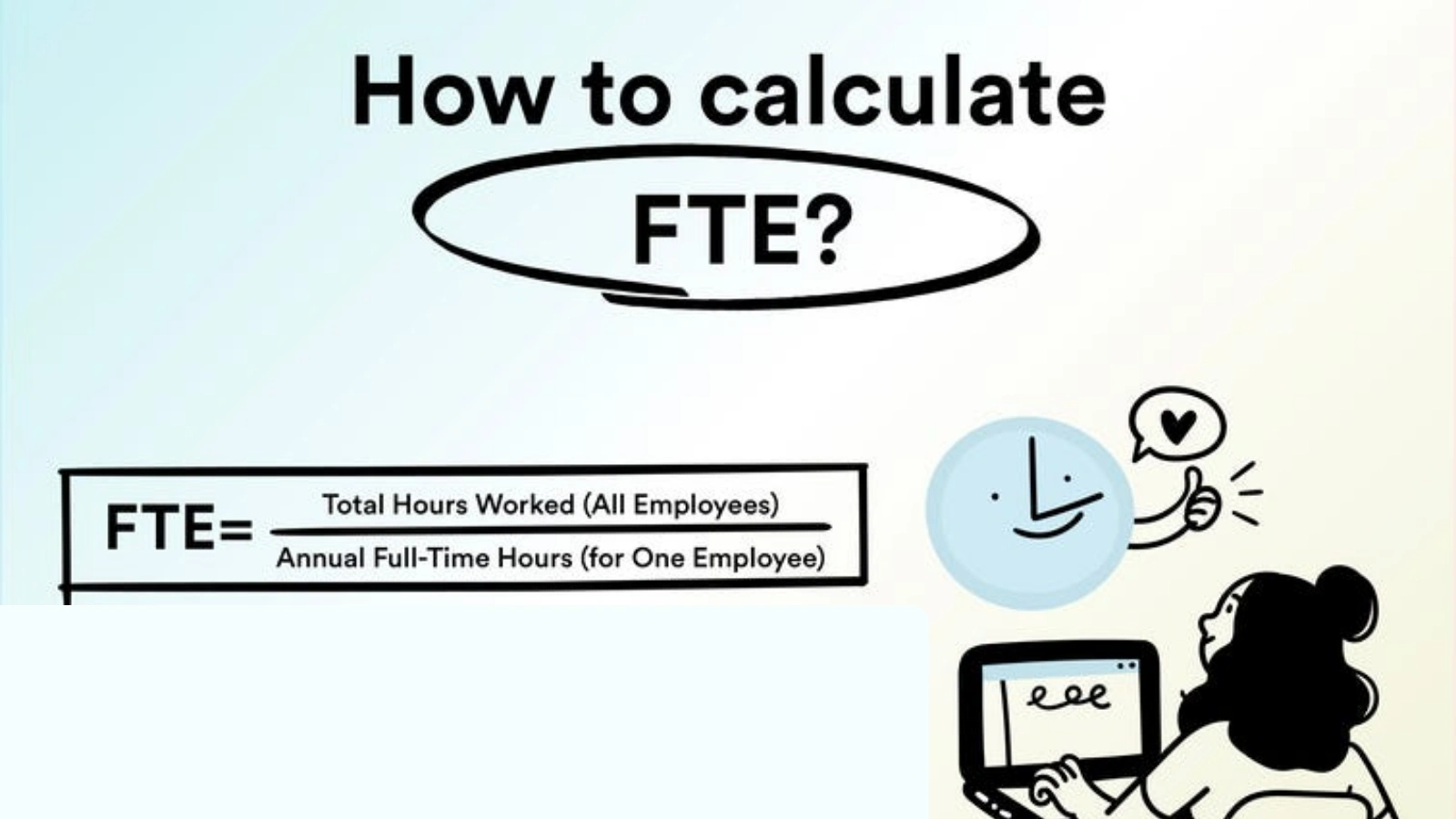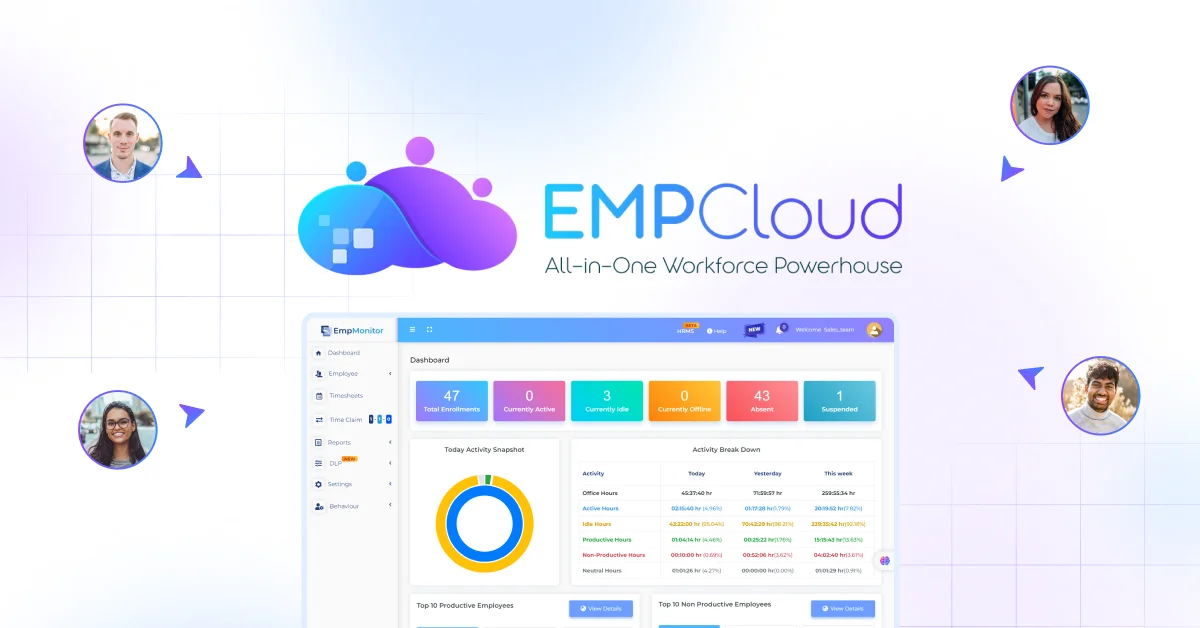
In business, productivity, staffing, and resource management are all influenced by a key concept known as FTE. Many organizations, HR managers, and business owners come across this term but often wonder: what is FTE and why does it matter so much in modern workplaces?
This guide will walk you through the complete details of FTE, its calculation, applications in business, and why it is crucial for workforce planning. We’ll also explore how different industries use FTE and provide practical examples to make it simple and clear.
In a hurry? Listen to the blog instead!
What Is FTE?
The term FTE stands for Full-Time Equivalent. At its core, FTE is a measurement unit used by organizations to standardize employee workloads, regardless of whether they are full-time, part-time, or temporary staff.
In simple terms, FTE answers the question: what is FTE in terms of workload? One FTE equals the hours worked by one full-time employee during a specific period, usually a week, month, or year.
This calculation allows organizations to compare staffing levels, plan schedules, and align resources without being confused by the varying working hours of different employees.
Breaking Down the FTE Meaning
To get deeper into the fte meaning, let’s consider an example. Imagine a company where a full-time employee works 40 hours a week. If two part-time employees each work 20 hours a week, together they would equal one FTE.
So:
- 40 hours per week = 1.0 FTE
- 20 hours per week = 0.5 FTE
- 30 hours per week = 0.75 FTE
By converting all employee hours into this equivalent, managers gain a clear view of the actual workforce capacity.
Why Understanding FTE Matters?
When managing a workforce, clarity around staffing levels is essential. You may have part-time employees, contractors, and full-time workers. Without a standardized system, measuring workloads and productivity becomes complicated. That’s where FTE comes in.
If you’ve ever asked yourself what is FTE, think of it as a way to simplify staffing by converting all types of employees into a standardized “full time equivalent” number. It makes budgeting, project planning, and compliance much easier.
Why Do Businesses Rely On FTE And How Does It Help?
Businesses depend on FTE calculations because they provide a standardized way to measure workforce capacity and make informed decisions. Here’s why FTE is so valuable:
- Budgeting and Cost Management: By knowing the total FTEs required, organizations can accurately estimate salary expenses, benefits, and overtime costs, avoiding unexpected financial gaps.
- Workforce Planning and Resource Allocation: FTE helps managers determine whether there are enough staff members to meet project demands, assign tasks efficiently, and plan for peak periods without overstaffing.
- Regulatory Compliance: Many government programs, health insurance requirements, and tax credits rely on FTE thresholds. Accurate FTE calculations ensure organizations meet legal obligations and avoid penalties.
- Productivity and Efficiency Tracking: FTE allows fair comparisons between teams of different sizes or compositions, helping businesses identify performance gaps and optimize workflows.
- Strategic Decision-Making: Beyond numbers, understanding FTE enables leaders to make smarter hiring, scheduling, and operational decisions, aligning staffing levels with organizational goals.
By using FTE as a core metric, businesses gain clarity, control, and flexibility in managing their workforce effectively.
What Is FTE In Business Context?
Many leaders ask: what is FTE in business and how does it affect everyday operations? In a business context, FTE goes beyond HR; it’s a core metric for operational planning.
For example, when a company estimates it needs 10 FTEs to complete a project, that could mean:
- 10 employees working full-time, or
- 20 employees working half-time, or
- Any combination that equals the required FTE number.
This flexibility allows organizations to mix part-time and full-time workers while still meeting project demands.
The Role Of Full-Time Equivalent In HR
HR departments rely heavily on FTE to design staffing structures. By converting employees into full-time equivalent values, HR managers can:
- Compare team sizes across departments.
- Calculate benefit eligibility (since many benefits require a minimum FTE level).
- Analyze workload balance between part-time and full-time staff.
- Forecast future staffing needs based on projected workload and growth.
- Standardize reporting metrics across locations and business units.
- Optimize labor costs by identifying overstaffed or understaffed areas.
- Support compliance with labor laws regarding hours and employment classification.
- Assist in budgeting and financial planning by quantifying total workforce capacity.
- Evaluate the impact of flexible work arrangements on overall productivity.
- When new positions are requested, FTE calculations help HR determine whether to hire full-time staff or allocate part-time workers strategically.
When new positions are requested, FTE calculations help HR determine whether to hire full-time staff or allocate part-time workers strategically.
How To Calculate FTE?
Understanding how to calculate FTE is essential. The general formula is:
FTE = Total Hours Worked by All Employees ÷ Full-Time Work Hours
Let’s break this down with an example. Assume a company defines 40 hours per week as full-time:
- Full-time employee (40 hours) = 1 FTE
- Part-time employee (20 hours) = 0.5 FTE
- Temporary staff (10 hours) = 0.25 FTE
If the company has:
- 5 full-time employees (5 × 1 FTE = 5 FTE)
- 4 part-time employees working 20 hours (4 × 0.5 FTE = 2 FTE)
- 2 temporary staff working 10 hours (2 × 0.25 FTE = 0.5 FTE)
Total = 7.5 FTE
This means the company’s workforce is equivalent to 7.5 full-time employees.
What Is FTE In Workday?
Another common question is what is FTE in Workday. Workday, a popular HR software, uses FTE calculations to simplify workforce management.
In Workday, FTE helps organizations standardize employee records, track working hours, and streamline payroll and benefits. By converting different work schedules into a single standard measure, HR teams can easily compare workloads across departments, plan resources efficiently, and make data-driven decisions about staffing.
It makes it easy to distinguish between a full-time worker, a part-time staff member, or a contractor while maintaining a clear overview of total staffing capacity. Workday also allows managers to generate reports based on FTE values, helping with budgeting, compliance, and workforce forecasting.
What Does FTE Mean In Workday?
If you’re using Workday for HR and payroll, you may wonder what does FTE mean in Workday. In this system, FTE represents an employee’s scheduled hours compared to the standard full-time schedule.
For example:
- An employee scheduled for 40 hours a week will have an FTE of 1.0.
- An employee working 30 hours a week will have an FTE of 0.75.
This allows companies to manage workforce distribution with greater accuracy. Additionally, FTE calculations in Workday can help assess eligibility for benefits, plan project allocations, and identify gaps or redundancies in staffing.
By integrating FTE metrics into performance and compensation planning, organizations can ensure fair workloads and optimize overall productivity.
How Can Technology Help You Manage FTE Effectively?
Modern tools are revolutionizing how businesses calculate and manage FTE. They don’t just track hours, they provide insights that help optimize workforce productivity, maintain compliance, and ensure smooth operations. Key capabilities include:
- Employee schedules: Monitor full-time and part-time work hours to accurately calculate FTE.
- Workload ratios: Understand the balance between part-time and full-time employees for better resource allocation.
- Compliance tracking: Ensure that labor laws and company policies are consistently followed.
Modern workforce planning isn’t just about calculating FTE, it’s about managing the people behind those numbers effectively. That’s why many organizations turn to advanced platforms like EmpCloud, which provide a complete solution for workforce management, HR management, productivity, and performance management, all within a single platform.
EmpCloud also offers powerful features like time tracking, attendance monitoring, and project management that support accurate FTE calculations while giving leaders real-time insights into employee performance and workload distribution. By integrating these capabilities, businesses can not only plan their workforce more efficiently but also enhance employee engagement, optimize resource allocation, and achieve long-term organizational growth.
This approach minimizes human error, provides real-time insights, and ensures that businesses can make informed decisions about staffing, productivity, and operational efficiency.
How Can EmpCloud Transform FTE Management For Smarter Workforce Planning?
Managing FTE effectively requires more than just calculations; it demands visibility, control, and efficiency across the entire workforce. EmpCloud provides a unified platform that helps organizations align employee hours, performance, and compliance seamlessly with FTE planning, making workforce management smarter and more strategic.
Key features include:
Manager-Centric Solutions:
Gain complete oversight of workforce performance with tools for task allocation, client management, and geo-location tracking of field teams. This ensures the right staffing levels for optimal productivity.
Time & Productivity Tracking:
Monitor work hours, activities, and productivity patterns in real time. Accurate tracking allows precise FTE calculations, ensuring resources are neither underutilized nor overstretched.
Project Management:
Strategically plan projects, track progress, and meet deadlines while aligning staffing levels to FTE requirements. EmpCloud enables leaders to assign tasks effectively and monitor outcomes efficiently.
HR-Centric Tools:
Simplify HR processes with face recognition attendance, automated timesheets, leave tracking, and payroll management. These tools ensure compliance with FTE-based benefit eligibility and streamline onboarding and offboarding.
Data Security & Insights:
Safeguard sensitive workforce data with advanced loss prevention measures. Generate in-depth reports to support informed decisions about staffing, resource allocation, and workforce performance.
Centralized Dashboard:
Access all employee and workforce metrics in one place, connecting staffing needs, FTE calculations, and performance insights effortlessly.
By redefining how organizations manage their workforce, EmpCloud ensures that FTE isn’t just a number; it becomes a strategic tool for smarter staffing, compliance, and business growth.
Why Do Government Agencies Use FTE?
Government agencies use FTE to standardize workforce measurements, define company eligibility for benefits, and enforce regulations. By converting employee hours into full-time equivalent values, governments can ensure fair application of labor laws and financial programs across organizations of different sizes.
For example:
- Healthcare compliance: Under laws such as the Affordable Care Act, FTE determines whether a company is required to provide health insurance to its employees.
- Tax credit programs: Various federal and state tax incentives use FTE thresholds to establish eligibility, ensuring that benefits are provided to organizations that meet workforce size criteria.
- Public sector funding: FTE is used by public institutions to allocate budgets for schools, hospitals, and other services based on staffing needs and workforce capacity.
- Regulatory compliance: Government audits often rely on FTE calculations to verify that organizations comply with labor laws, minimum staffing requirements, and reporting standards.
In all these cases, understanding and accurately calculating FTE is critical for organizations to remain compliant, plan financially, and align workforce management with regulatory requirements. It also provides transparency and consistency in how agencies assess workforce-related obligations.
What Is FTE In Strategic Planning?
In strategic planning, FTE plays a major role in linking workforce availability with company goals. For instance, if a project requires 50 FTEs and the company only has 40, managers must either hire new employees or adjust timelines.
By using FTE metrics, organizations can also identify areas where resources are underutilized or overextended. This enables leaders to optimize team structures, improve project efficiency, and make data-driven decisions that align workforce capacity with long-term strategic objectives.
Thus, the answer to what is FTE directly influences business strategies, hiring decisions, and budgeting processes.
What Are The Benefits Of Using FTE?
Full-Time Equivalent (FTE) calculations provide a standardized way to measure employee workloads, making it easier for organizations to plan, budget, and manage staff effectively. By converting different work hours into a single metric, FTE ensures clarity, fairness, and accuracy in workforce management.
- Clarity in Workforce Analysis: FTE standardizes different work hours across employees, making it easier to compare workloads. This helps HR and managers understand overall staffing capacity and identify gaps.
- Financial Transparency: By converting hours into FTE, organizations can align staffing levels with budgeting needs. This ensures labor costs are accurately tracked and prevents overspending.
- Better Planning: FTE calculations assist in forecasting project timelines and resource allocation. Managers can assign tasks efficiently, knowing how much workforce capacity is available.
- Compliance: Using FTE keeps organizations aligned with legal requirements, such as benefits eligibility and labor laws. It also simplifies reporting for audits and regulatory reviews.
- Flexibility: FTE supports both part-time and full-time arrangements by providing a standardized measurement. This allows organizations to balance workloads without overstaffing or underutilizing employees.
Conclusion
So, what is FTE? It’s more than a calculation; it’s a workforce planning tool that helps businesses manage employees, budgets, and compliance efficiently. By standardizing different working hours, FTE provides clarity for leaders, HR managers, and employees alike.
Whether you’re planning staffing, ensuring compliance, or forecasting growth, FTE remains essential. Tools like EmpCloud make tracking FTE simple, combining time management, attendance, and project oversight in one platform.
Applying FTE effectively allows businesses to optimize resources, boost efficiency, and make smarter decisions. With EmpCloud, FTE becomes not just a number, but a strategic tool for workforce planning and business growth.
FAQs
1. What is FTE in business?
Ans. FTE, or Full-Time Equivalent, measures workforce capacity by standardizing different working hours into a single, comparable unit. It helps businesses plan staffing, budgets, and resources efficiently.
2. Does FTE influence employee benefits and eligibility?
Ans. Yes, many companies and government programs use FTE thresholds to determine which employees qualify for benefits such as health insurance, retirement plans, or paid leave.
3. How do part-time or temporary employees impact FTE calculations?
Ans. Part-time and temporary employees are converted into fractions of a full-time equivalent based on their hours worked. This ensures the total workforce is accurately represented, helping with planning, budgeting, and productivity analysis.








